-
VIEW IT /DO-IT-YOURSELF CRAFT WORKSHOPS
WHAT: Personalise your own Kobo product with these do-it-yourself kits. Participants can either paint a Merlion-shaped Daruma doll, construct a mini bird mobile, etch their own messages or draw on Paulownia wood cards and boxes.
WHERE: Gillman Barracks, Block 7 Lock Road
WHEN: Friday, from 5 to 9pm
ADMISSION: Free. Participation for each hour-long workshop is on a first-come, first-served basis and limited to 10 people a session
-
BAMBOO-WEAVING DEMONSTRATION
WHAT: Get up close with bamboo-weaving artist Takehiko Sagawa of Sochiku-An as he demonstrates the intricacies of the craft.
WHERE: Gillman Barracks, Block 7 Lock Road
WHEN: Friday, 7pm
ADMISSION: Free
-
DARUMA DOLL-PAINTING DEMONSTRATION
WHAT: Daruma doll-maker Hirohisa Imai of Imai Daruma shows how he paints these roly-poly dolls with deft strokes of his paintbrush.
WHERE: Supermama Gillman Barracks Gallery, 01-26, Block 47 Malan Road
WHEN: Friday, 8pm
ADMISSION: Free
New design collaboration helps revive traditional Japanese crafts
Kobo Collection by lifestyle gallery Supermama aims to bring together South-east Asian aesthetics and traditional Japanese craft skills
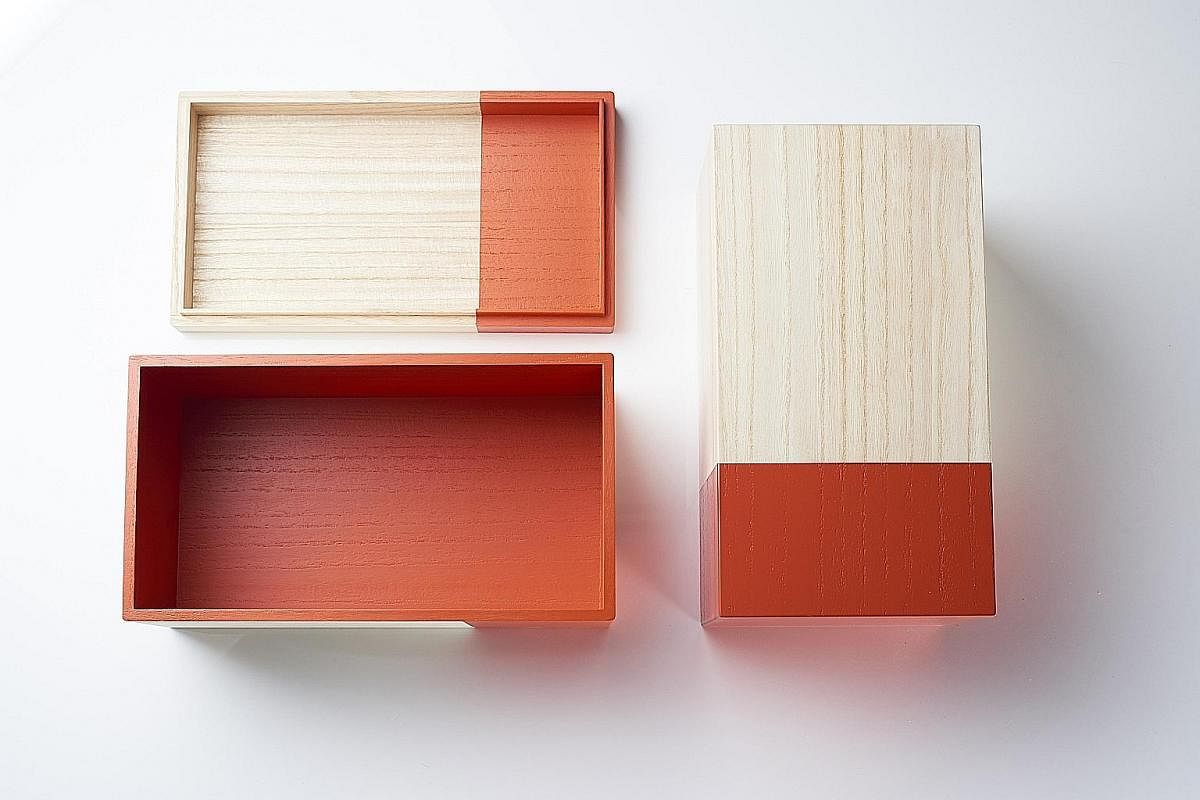
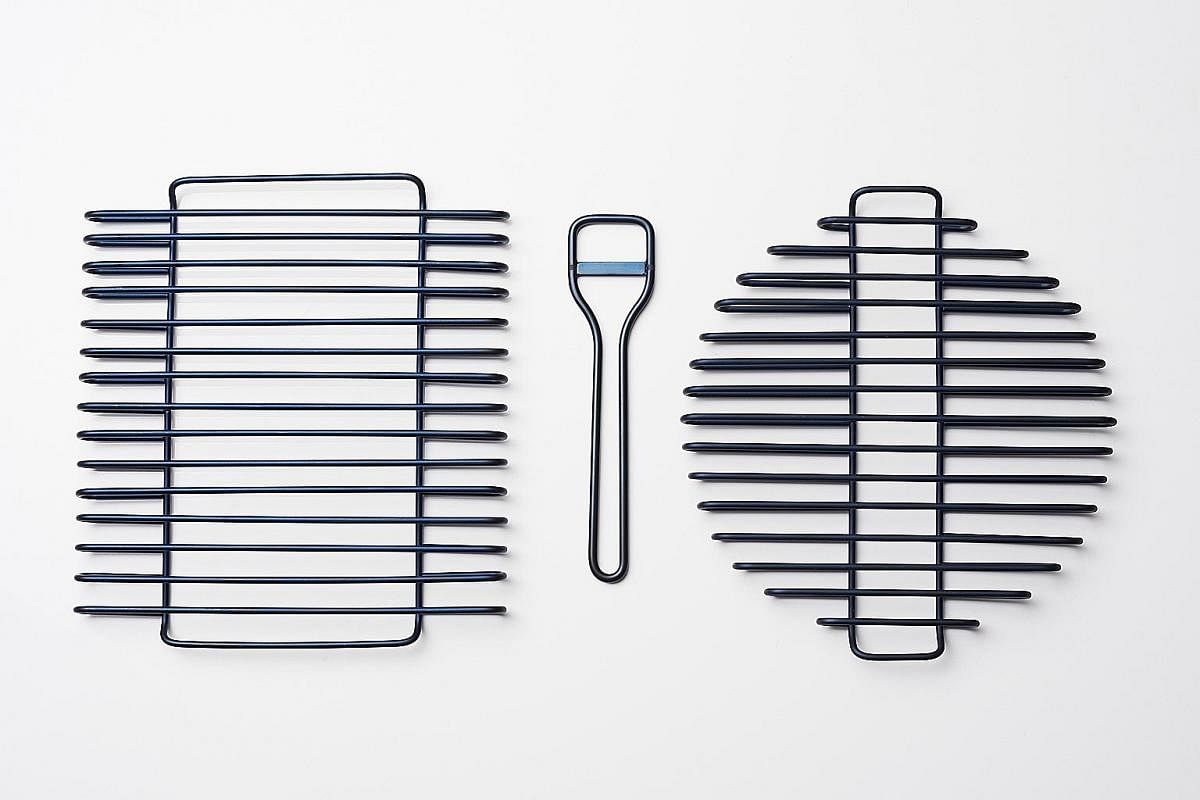
You could say that Mr Edwin Low, founder-owner of lifestyle gallery Supermama, is something of a design matchmaker.
Since he spearheaded the award-winning Singapore Icons plates series - his signature line of Singapore-themed tableware designed by five local designers and crafted by established Japanese porcelain company Kihara Inc - in 2013, the 37-year-old has made design collaborations his forte.
He is back with a bigger tie-up, pairing four Singapore designers with 10 Japanese craftsmen and production companies. Called Kobo Collection - kobo means a maker's workshop or factory in Japanese - the products have a strong South-east Asian aesthetic and are made using traditional Japanese craft skills.
Highlights of the 39-piece collection include a trio of metal orchid-shaped jewellery trays; a trivet and bottle opener in metallic sheens; a sparrow mobile; and a pair of auspicious Daruma dolls in Peranakan wedding finery.
Prices range from $22 for a rectangular holder to $3,000 for a customised kopi pot sleeve. Most products are under $100.
Mr Low, who is the brand director of Kobo Collection and worked with Mr Keisuke Otani, his coordinating partner in Japan, says: "Kobo is a collection of everyday lifestyle items that are well-made for anybody to use. These products are not designed for a design trade show, only to be shown once."
The project has been a year in the making, with the 10 makers chosen by Mr Low after an open call to companies in the Kanto region. This involves the Greater Tokyo Area and seven prefectures such as Gunma, Chiba and Kanagawa. About 30 companies and indie makers responded and the list was narrowed down to those willing to make wares for the mass market.
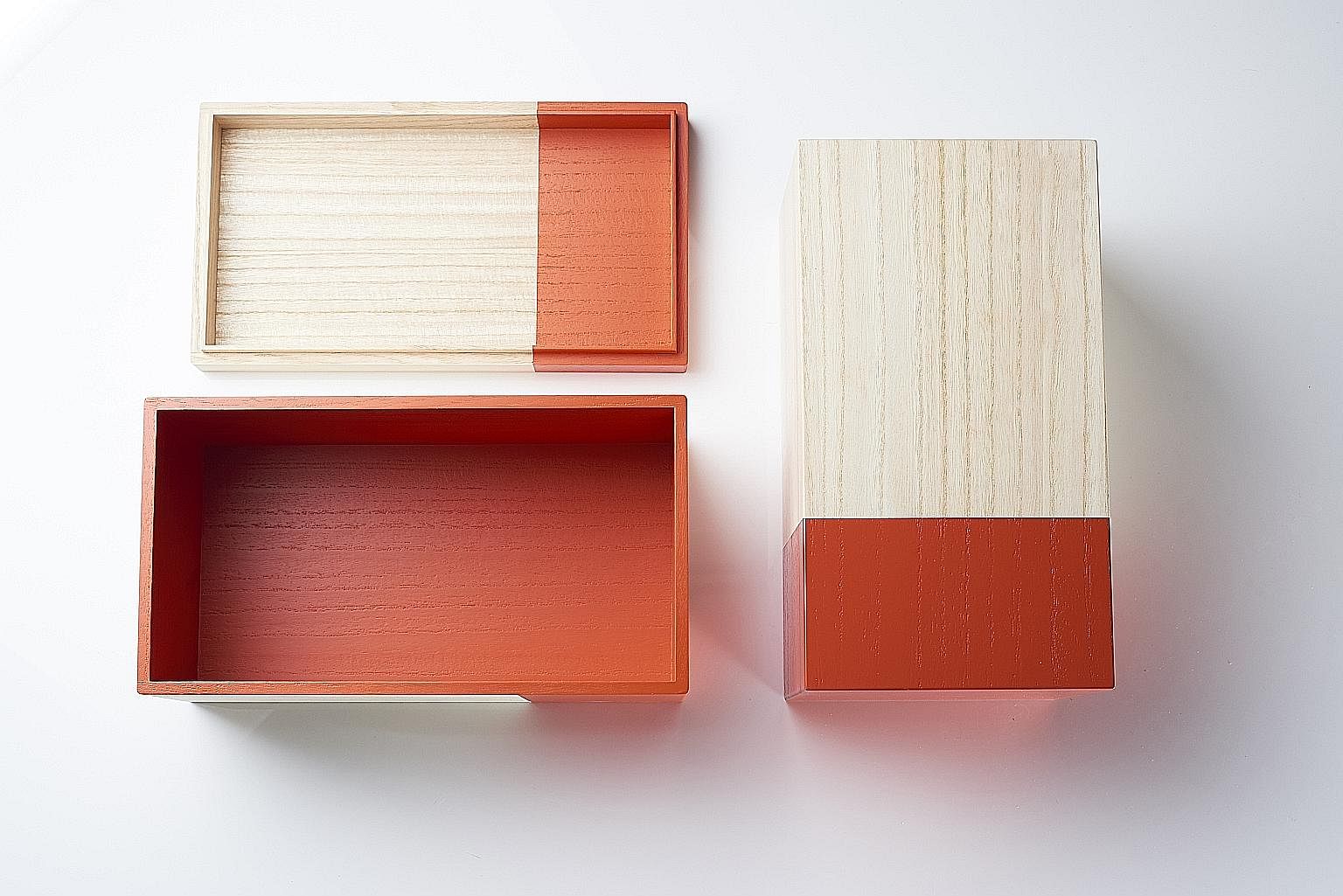
The final collective includes Yamazaki Kinzoku Kogyo, a tableware and cutlery maker in Tsubame along the north-west coast of Honshu Island, which has produced items for big brands such as Swedish furniture giant Ikea; Hakoyoshi Kiribakoten Co, a Paulownia wood box-making company which has been in business since the Meiji era; and Sochiku-An, a small bamboo weaving outfit run by a former architect and his father.
Mr Low says: "There are many designers with good designs around the world. But if you look at workmanship, the quality isn't there. That's why I want to go to the Japanese - they are still one of the top product makers in the world. It's in the Japanese culture and their character to take pride in what they do."
Once he had the list of Japanese production companies, hepicked the four Singaporean designers. They are Mr Gabriel Tan, a product and furniture designer who runs his eponymous studio; Mr David Tham, founder and creative director of design consultancy firm, StudioNorm Design Consultants; Ms Clara Yee, creative director of design studio, in the wild; and Ms Priscilla Tan, Supermama's head of design.
Mr Low says: "These designers were picked for their experience in various fields such as the hospitality industry or have a good reach with certain age groups. I want to tap these areas."
The designers made two trips to Japan last year to meet the makers - first to discuss ideas and later to check in on how production was coming along. Each maker was paired with either one or two of the designers for this project.
As both designers and makers were unfamiliar with one another, there were many things they needed to work out.
For starters, there was the language barrier. Mr Otani stepped in as a translator and when designers and makers communicated over e-mail, Google Translate and detailed sketches came in handy.
Creating for a new set of customers, the makers had to understand the Singapore references or change their perception of what works well for a non-Japanese buyer.
Take, for example, Ms Yee's Museum Of My Mind, two wooden boxes she worked on with Hakoyoshi Kiribakoten Co. The pale greyish-brown Paulownia wood boxes have bright stripes running down one side, its lid grooves painted in. The medium-sized Daidai Iro box has a tangerine orange swatch, while the small-sized Hana Kon Iro has a dark green stripe.
The company's chief executive officer Shigeyoshi Tobari, 50, says: "Usually, we would never make a box with such bright colours or paint the grooves underneath the lid. Japanese customers will complain if we sold them a box like this. It's a completely new perspective for me, but I see it as a good thing. If I want to sell these boxes outside Japan, I have to challenge what I know."
While going beyond home-ground is what drew many of the makers to the project, some are also hoping to kick-start demand to keep their niche industries thriving or turn their traditional craft more cosmopolitan.
Daruma doll-maker Hirohisa Imai, 47, grew up watching his parents mould and paint these papier-mache figurines in traditional colours: a bright red hue for the stout bodies and thick black strokes for the curvy eyebrows. Considered Japanese lucky charms, these dolls are commonplace in many Japanese homes.
When he took the helm of Imai Daruma about two decades ago, the industry was facing poor demand.
The small home-based workshop in Takasaki was started by his grandfather more than 80 years ago and is one of three top doll-makers in the area. To jumpstart sales, he started making stylised Darumas, featuring non-traditional characters such as Hello Kitty-shaped Darumas and worked with Japanese designers to create minimalist-looking versions.
Last year, he made Merlion-shaped ones in collaboration with Supermama. This time, he worked with Mr Tham to create a pair of Daruma dolls decked out in Peranakan wedding finery.
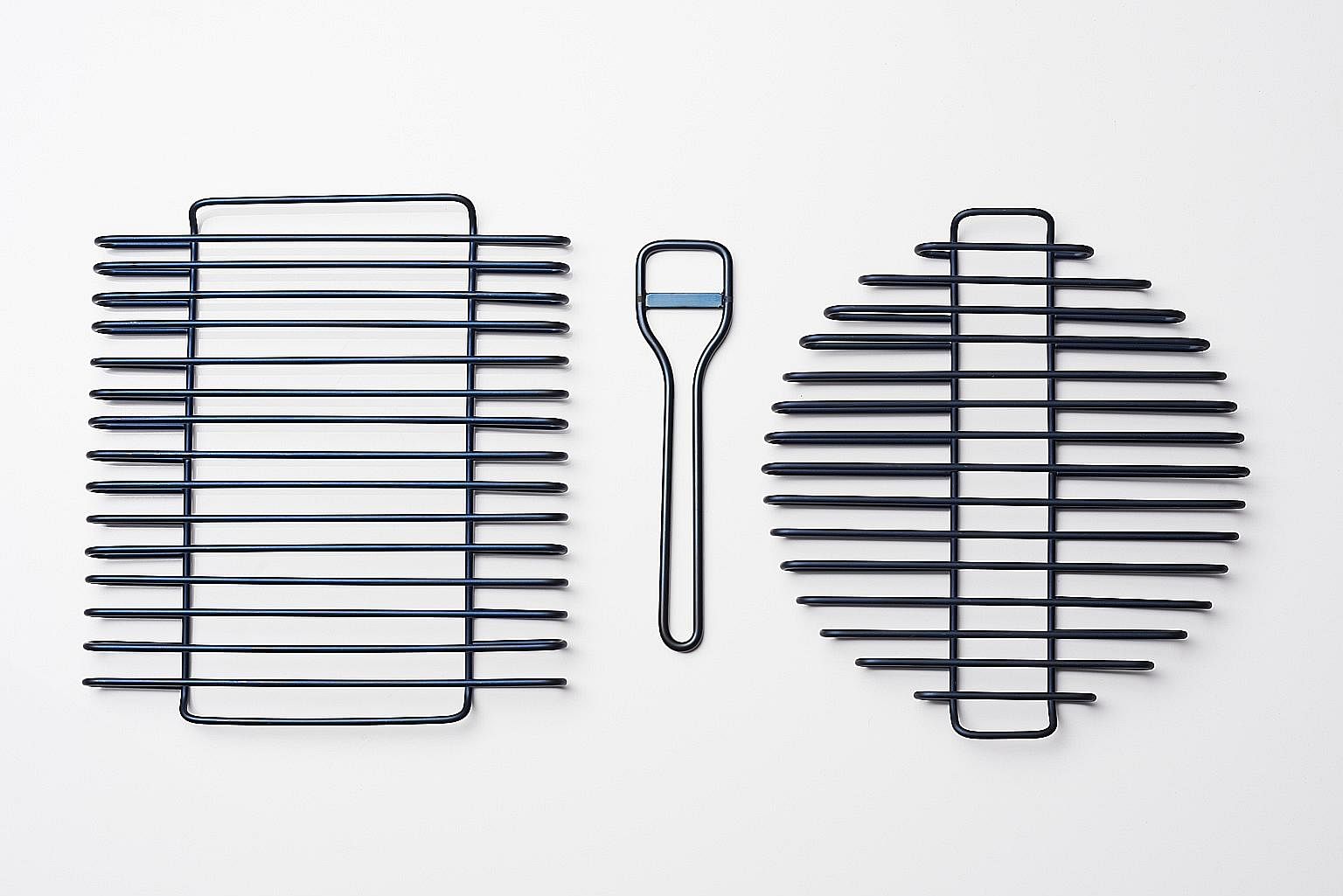
Seeing how both foreigners and Japanese people appreciate these handmade Daruma dolls is why he is keen to be a part of projects such as Kobo to keep the trade relevant.
While there have been rumblings in the industry of how his versions are "too creative", Mr Imai says: "From the way the dolls are made by hand to how it's painted, I'm still keeping to tradition. But these new Darumas have attracted more people to find out about the history of the doll."
The cultural exchange cuts both ways. The Singaporean designers are experiencing a more collaborative approach to creating new products, instead of merely sending off a design to be fabricated at a factory.

Mr Tham, whose company works mainly on hospitality projects and also designs furniture, says: "This is my first time working so closely with a maker, where we discuss everything from the design to the concept. It's not just them taking instructions. It's now on a different level where they share their knowledge and skills, and also reflect on your design process. This 'cross-pollination' is very nice."
Mr Low wants to expand the project beyond just selling products.
To kick off the launch, he has invited some of the Japanese labels to conduct design workshops. On Friday, there will be two demonstrations by the Japanese craftsmen here, while design workshops will be held from 5 to 9pm on a first-come, first-served basis the next day.
Mr Low, who opened a Supermama store in Tokyo last December, has big plans for future Kobo editions. "I want to create an ecosystem, where makers can pair up with designers to create good work. It's just about finding the right people."
• The writer's trip was sponsored by Supermama.
• Kobo Collection is available at Supermama's Gillman Barracks gallery, 01-26, Block 47 Malan Road, as part of Singapore Art Week and can be viewed at kobocollection.com. The collection will also go on sale at Supermama's other stores in Beach Road and Wheelock Place from Feb 4.
Three makers and their designs
Sochiku-An
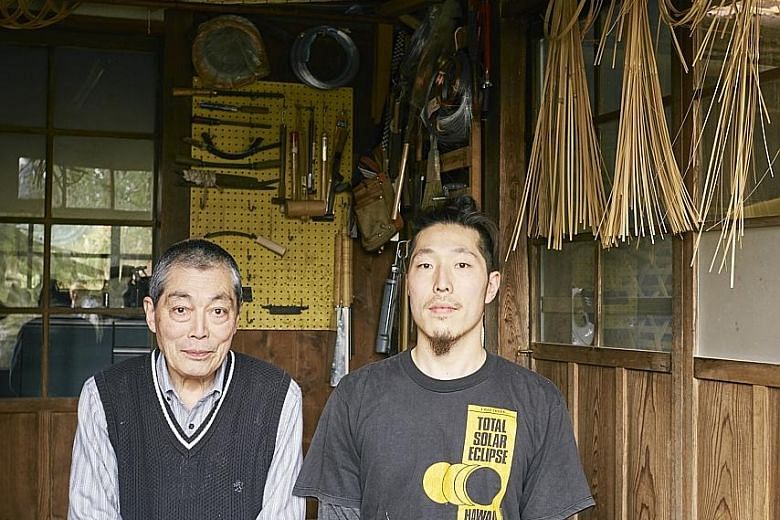
Mr Takehiko Sagawa was building a career as an architect in Tokyo when he decided to give up his cosmopolitan life to move back home.
Ditching the tall skyscrapers and bustle of Japan's busy capital, he returned to a quieter lifestyle in the rustic Tochigi prefecture to become a bamboo craftsman like his father Soho Sagawa (right).
Back in 1975, the elder Mr Sagawa started Sochiku-An, a bamboo-weaving craft studio dedicated to producing handmade artisan wares. He took them to exhibitions and won prizes.
His son grew up surrounded by the humble material and watched his father split, treat and plait the bamboo into various objects. Now, as the elder Mr Sagawa, 77, is getting on in age and the profession attracts fewer apprentices, Mr Takehiko Sagawa feels a strong pull to breathe new life into the traditional craft.
The 34-year-old, who has two older sisters who are not involved in Sochiku-An, says: "Other people might practise bamboo weaving as a hobby. I want to carry on the trade and keep the culture. It must be my job and not my hobby."
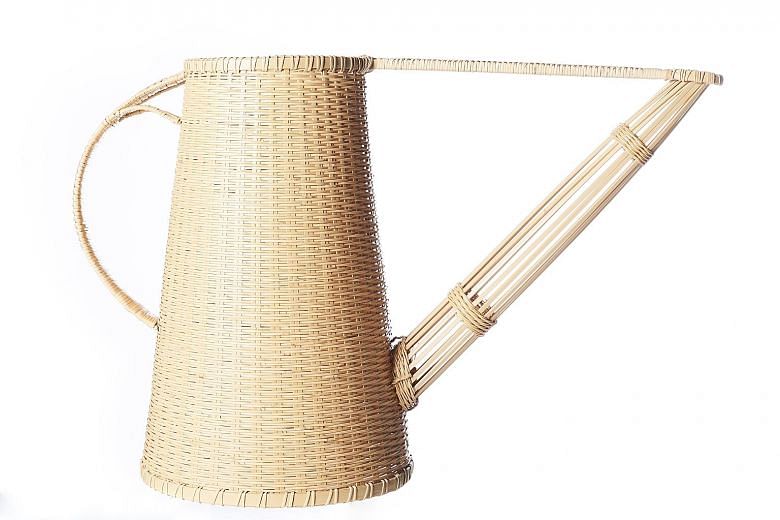
He can work for days on a single item, depending on how intricate it is. A commissioned art piece can take up to three months to complete.
Since he came on board, Mr Sagawa has brought a modern touch to the designs and looked beyond Japan for new projects.
For Kobo Collection, he created a limited-edition collection of nine bamboo-weaved kopi pot sleeves (from $480 to $3,000), designed by Supermama's head of design Priscilla Tan.
He says that despite this new style and direction for Sochiku-An, the essence of traditional bamboo weaving still remains.
"This is a way of introducing the art of bamboo weaving to a new audience and making it relatable to non-Japanese.
"As a craftsman, I need to learn how to make my products fit different cultures and lifestyles. We need to change to survive."
Mothertool
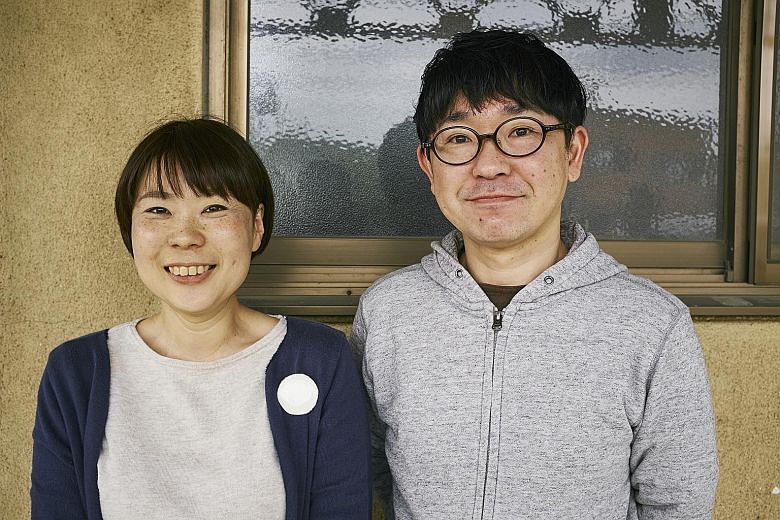
Ms Miho Nakamura, 42, has grown up in and around factories.
Her parents were in the business of assembling things. They once had a factory assembling parts for electrical appliances. Later on, they switched the business to a pachinko assembly factory, churning out 6,000 machines in a day at its peak. When demand took a dive, her enterprising folks turned to putting car interiors together.
One thing all the businesses had in common was that the products were put together by hand. But as cheaper automation and machines became popular, hand assembly went out of fashion.
Ms Nakamura, who became a factory manager when she was 26, says: "Many smaller factories were closing down because they could not compete with cheaper factories that were producing products faster. But these hand-assembly factories produced many products and used important (technical) skills that are useful."
While studying interior design in Tokyo, she worked with Mr Shunya Murohashi, 42, on a school project where they looked at how craftsmen paired different materials with various techniques. Inspired, the pair came up with the idea of making mobiles - floating sculptures that are suspended from wires and move in the wind.
In 2006, they founded Mothertool, a company that collaborates with small factories in the city of Ashikaga. The couple, who are married, would visit each factory to understand its forte and see which ones they could tap to turn designers' drawings into reality.
Ms Nakamura says: "I didn't want to continue what my parents did. I wanted to do something more than just putting things together. At Mothertool, we are connectors."
For Kobo Collection, Mothertool teamed up with Ms Clara Yee to make a Sparrow Desk Mobile ($60), which comes in blue, white or yellow. The design is Ms Yee's homage to the small birds that take refuge in her balcony during the monsoon rains.
Ms Nakamura says of Ms Yee: "This is a new area of design for her. But I find that her approach to designing a mobile is less textbook (as compared with product designers) and freer."
Yamazaki Kinzoku Kogyo

Since it was founded in 1918 in Tsubame, near the north-west coast of Honshu Island, tableware and cutlery maker Yamazaki Kinzoku Kogyo has become one of the most well-known manufacturers in the industry.
Besides producing its own designs, Yamazaki has been commissioned to make wares for big clients such as Swedish furniture giant Ikea, for which it made a compact cutlery set; and The Nobel Foundation, for which it made flatware for the organisation's annual awards banquet.
Its products are also on the shelves of big American department stores such as Neiman Marcus and Macy's, and was once sold at Tangs in Singapore.
Yamazaki has also worked with prominent designers such as Japan's Ken Okuyama on a cutlery set - two spoons, a fork and a knife - that takes inspiration from tree branches. It won the Best of the Best prize at the Red Dot Design Award in 2013, one of the top honours in the scene.
Yamazaki's president Etsuji Yamazaki, 77, takes pride in putting out original designs that appeal to the market they are sold in, instead of competing on quantity.
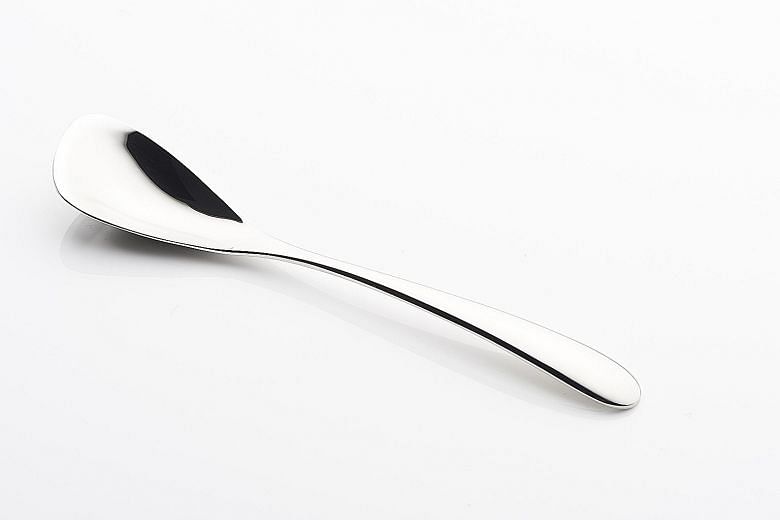
Mr Yamazaki, whose three children work with him, says: "We don't fight with price. It's not easy to beat Chinese manufacturers who can do them cheaper. My strategy is to showcase the quality of our made-in-Japan products."
With Supermama's head of design Priscilla Tan, Yamazaki has produced The Mother's Spoon ($24) - a spoon with part of its rim angled so that meat and potatoes can be easily cut with just one hand.
It comes in handy for mothers who have to hold their children and feed them at the same time.
Mr Yamazaki says: "I don't expect that we will get a huge quantity of orders from Singapore's market as it is too small.
"But being part of Kobo is our way of stepping up our name in the South-east Asian region."
Join ST's Telegram channel and get the latest breaking news delivered to you.
A version of this article appeared in the print edition of The Straits Times on January 20, 2018, with the headline New design collaboration helps revive traditional Japanese crafts. Subscribe
